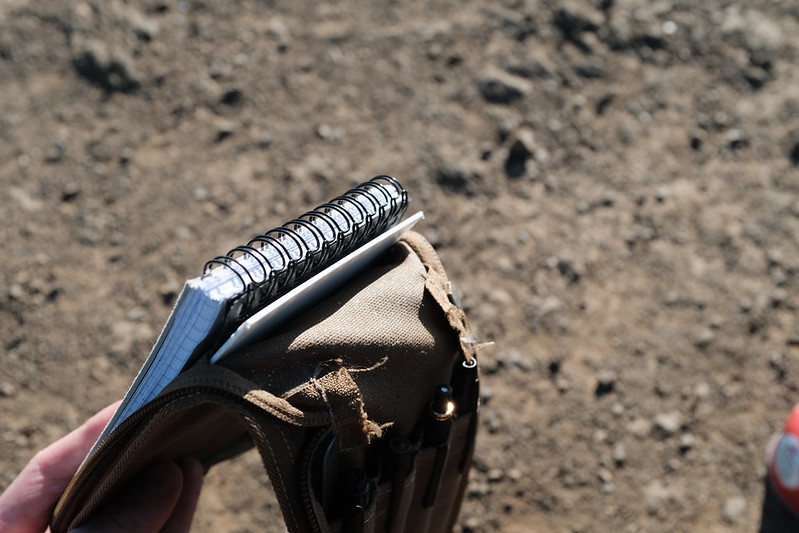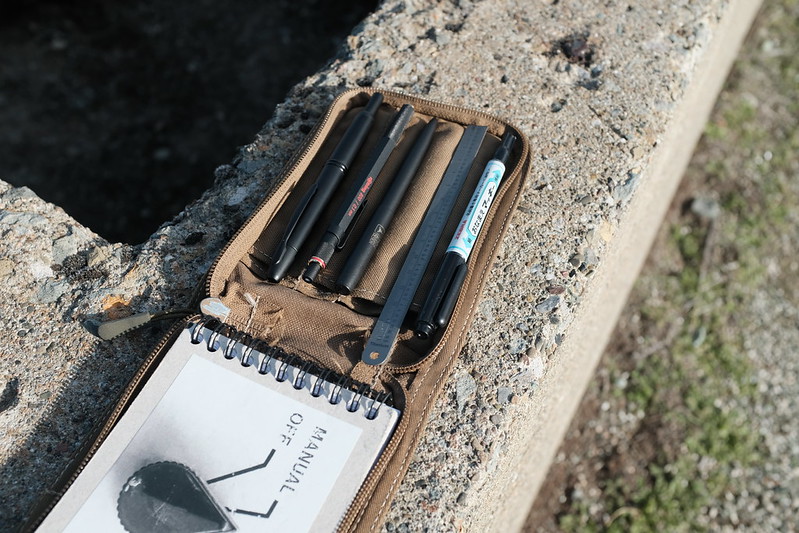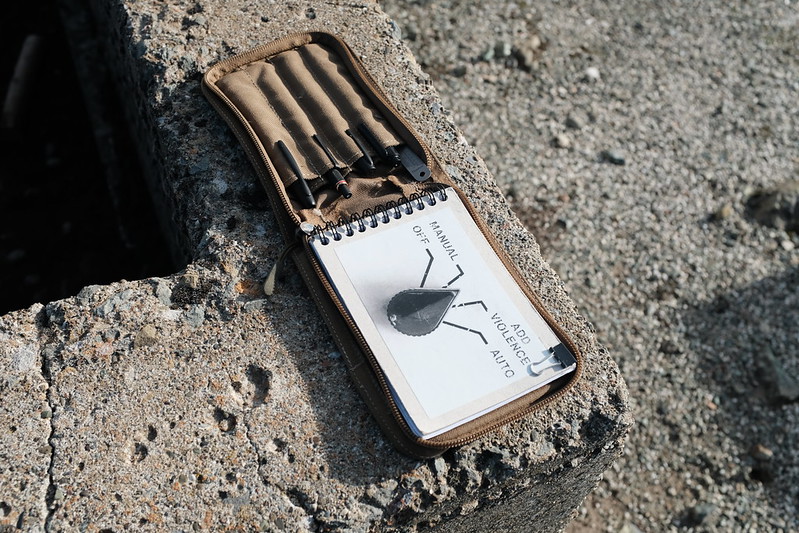I’ve been attracted to the form factor of the Kaweco Sport for a while, though the low capacity of the piston converter is a bit of a turn off. Last year when they released the aluminum body piston filler my attraction increased, but those pens cost more than I want to spend. Then at the end of the year they released a resin version of the piston filler for a lower price, and I found a sale with a good discount during the holidays. I bought one.
I like the pen. I especially like to carry it in the sleeve pocket of my MA-1, because I like the idea of living in a world where people walk around with fountain pens in MA-1s. Be the change you want to see in the world. Unfortunately, I scored that Pilot Vanishing Point on eBay at the end of 2023. That has been my daily writer ever since, and purchasing the Kaweco Classic Sport Piston Filler made clear that the Vanishing Point has ruined me for other pens. Specifically, on two points.
First, the Vanishing Point has an 18k gold nib. The Kaweco Sport does not. Kaweco’s steel nib isn’t bad, but it isn’t gold, and when I write with it I often find myself thinking “I could be writing with the VP instead.” It isn’t scratchy, but it isn’t not scratchy.
Second, the cap of the Kaweco Sport screws on. I journal daily, but that’s the only point at which I am sitting down with the intention to write. Any other time I grab a pen during the day it is to jot down some quick note. The clicky clicker of the Vanishing Point is extremely convenient for that. Needing to take the time (and two hands) to unscrew the Kaweco’s cap is comparatively annoying.
But I do really like the form factor of the Kaweco Sport. I wished for a pocket pen with a gold nib and a non-threaded cap. And then the universe opened my eyes to the Pilot E95S. At 4.7” when capped, it is a little longer than the Kaweco’s 4.1”, but it is still pocket sized. And it has a gold nib. And the cap is not threaded. And it is expensive.
So I went searching on eBay for a used one. I looked periodically for a few weeks and nothing turned up for an acceptable price. But the E95S is a modern re-issue of a classic pen called the Elite. Once I figured out that I should search for “Pilot Elite”, a plethora of reasonably priced options appeared. This is how I came to purchase my first vintage fountain pen.

The pen is everything I wanted it to be. The Pilot Vanishing Point is still my favorite, but the Elite is a close second.
Removing and posting the cap does take longer than clicking the Vanishing Point, but is still quicker than unscrewing anything, and it is immensely satisfying. All the reviews I read of both the Elite and the E95S mentioned how nice the action of uncapping, capping and posting the pen feels. They weren’t wrong. The taper of the body and the steel structure within the cap – a sort of leaf spring – provides the feeling of a smooth, perfect press fit. It is mildly addicting.
The nib is great, as expected. The Elite was available with both 18k and 14k gold nibs. I bought a 14k in fine, and it feels just as smooth and pleasant as the 18k fine nib in the Vanishing Point. Maybe a hair thinner, which makes me want to use a slightly wetter ink. But my two favorite inks are still Noodler’s Heart of Darkness and Noodler’s Army Air Corp, and I enjoy both inks interchangeably in both pens.
The code at the base of my nib is H977. This means the pen was manufactured in Hiratsuka in September 1977.
There are a few Elites on eBay for $30-40. If the pen is that cheap, it is probably one of the steel nib versions that was made in Korea. The Japanese gold nib versions are more expensive, but I found that if you do not care about a few scratches – which, for a pocket pen, I do not – there are plenty of attractive options in the $50-75 range. I think that’s a great deal for this level of quality. I already want to buy a second.

It fits in the MA-1, too.









